Black Masking Indians (AKA Mardi Gras Indians) Explained
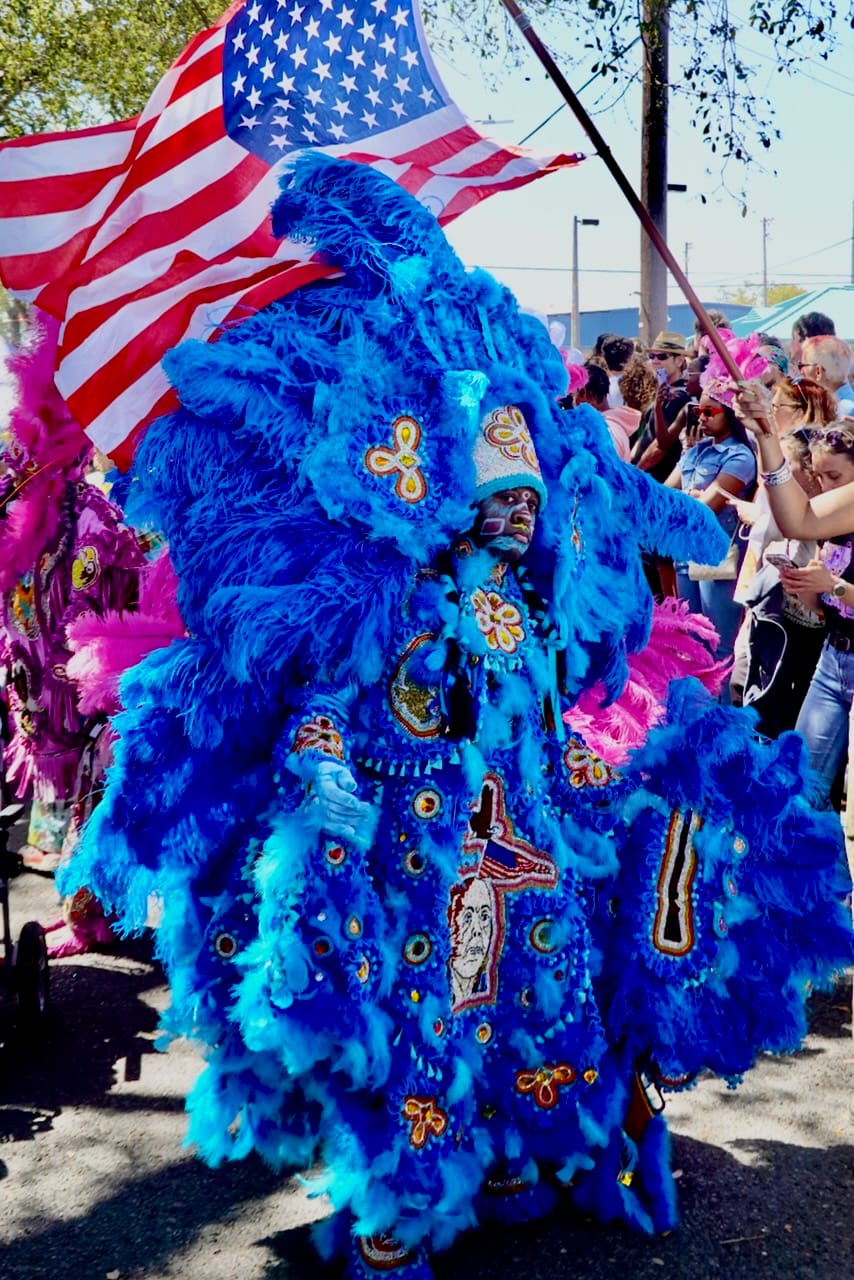
There's always something spectacular to see in New Orleans but the Black Masking Indians (AKA Mardi Gras Indians) are my favorite cultural offering. Every year the tribes take to the streets to show off magnificent handcrafted suits weighing up to 150 pounds and costing thousands of dollars and hours to create.
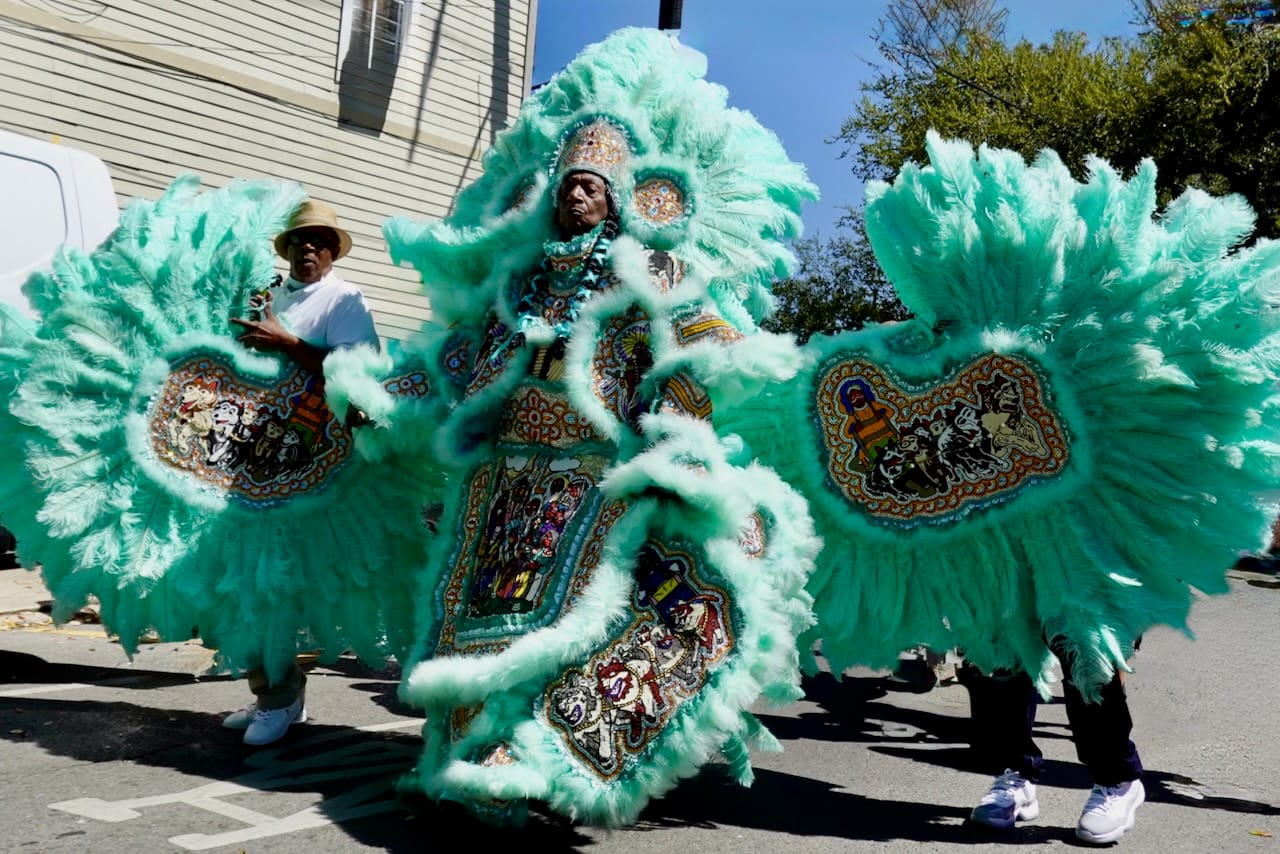
What's a Black Masking Indian?
Black Masking Indians are locals known for their incredible suits of beads and feathers, and their percussion-driven chanted music. Each tribe follows a hierarchy of Big Chief, Big Queen (a more recent development), Spy Boy, Flag Boy, and other such titles – each with their own responsibilities while parading.
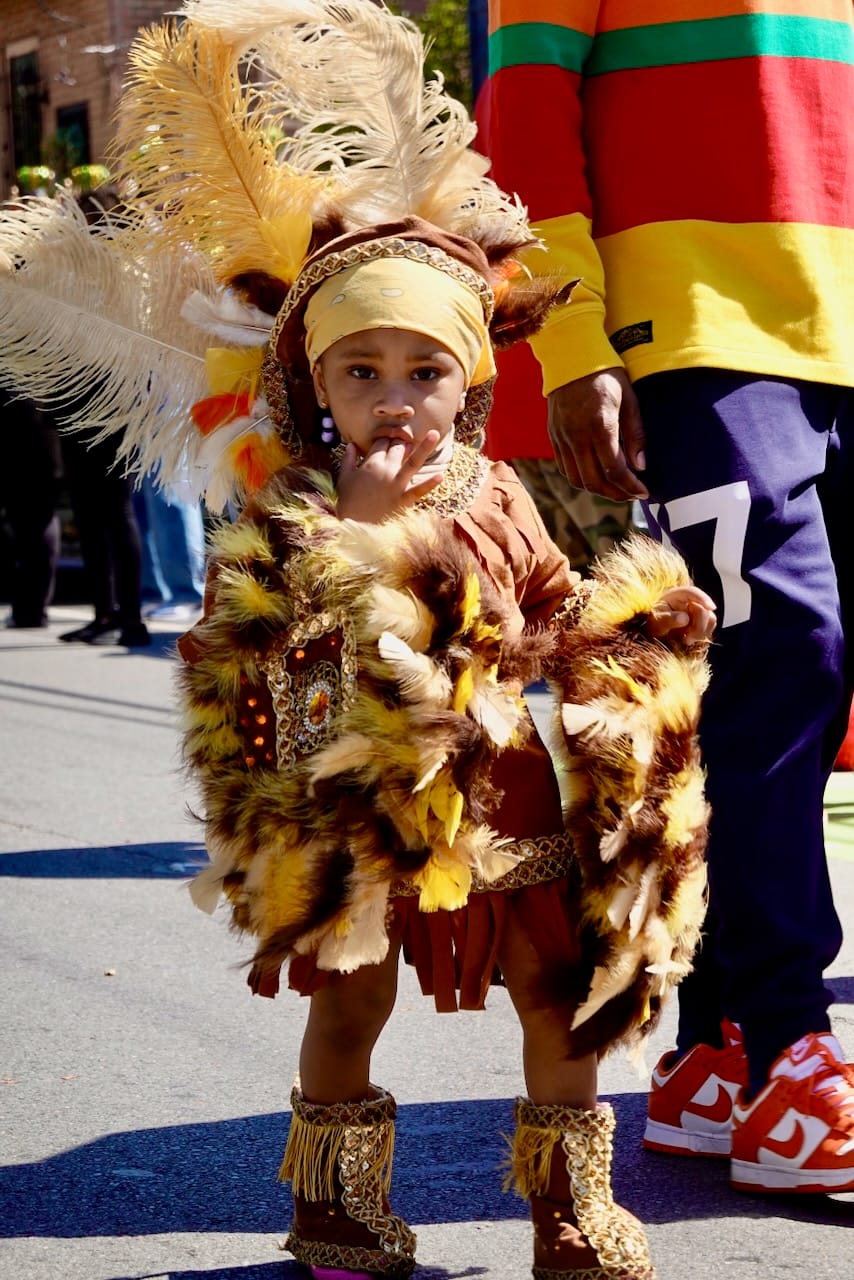
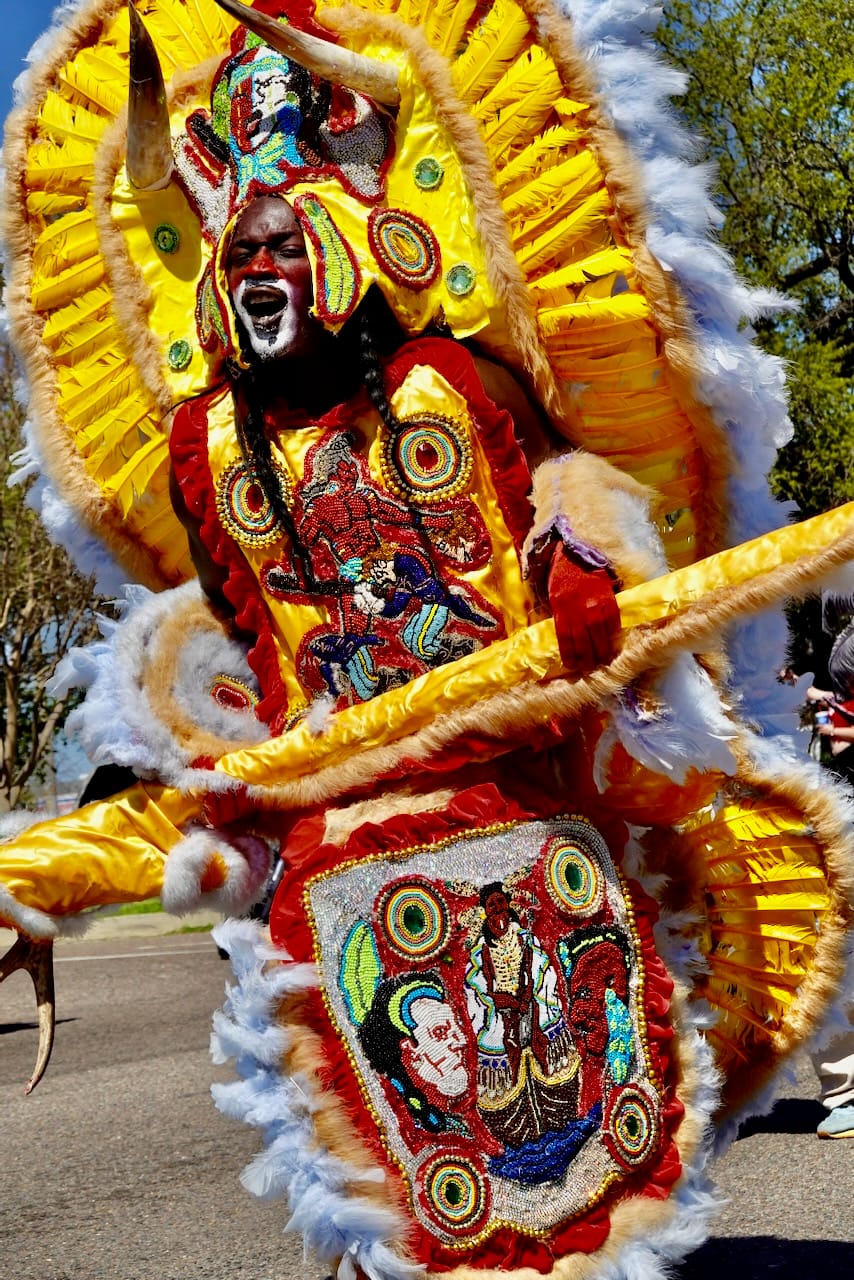
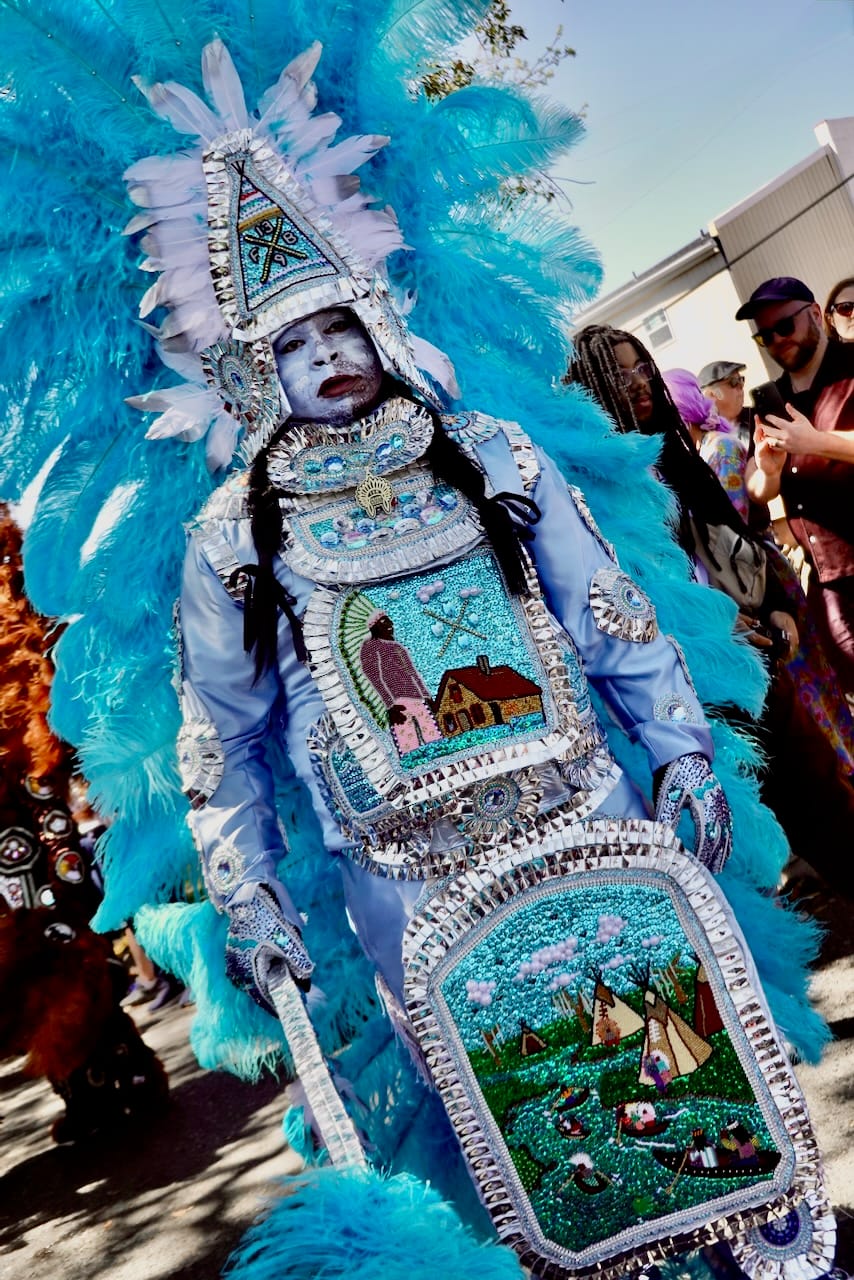

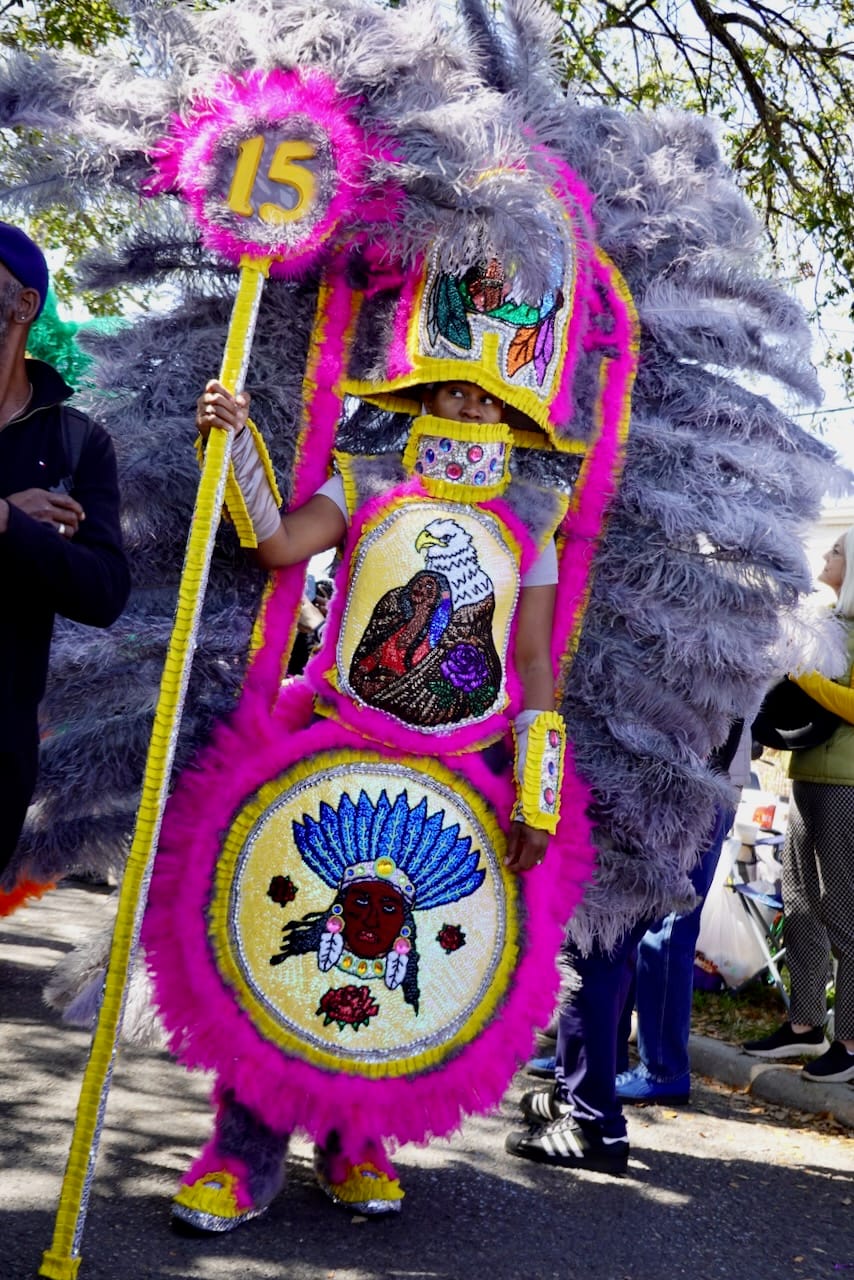

How did the tradition start?
Some say that when Buffalo Bill’s Wild West Show came to town in the 1880’s, locals were inspired to "mask" by the show's elaborately-costumed "Indians" (Native Americans, but often played by other races).
The more popular belief is that the tradition of masking pays tribute to the antebellum relationship between slaves and Native Americans. Some slaves were aided by Native Americans through the Underground Railroad, acceptance into various tribes, or ‘passing’ as Native Americans to gain/maintain their freedom.
What's the legend of Chief of Chiefs “Tootie” Montana?
Decades ago, the tribes' clashes in the streets were violent, sometimes resulting in deaths. During that time, Allison "Tootie" Montana started making his own Mardi Gras suits at the age of 10. After becoming a lather and carpenter, his masking designs took on the 3-D shapes of the eaves and ornamental plaster forms from his carpentry – making him "the prettiest" (the highest compliment you can give a suit) and inspiring the look of the downtown tribes to this day.
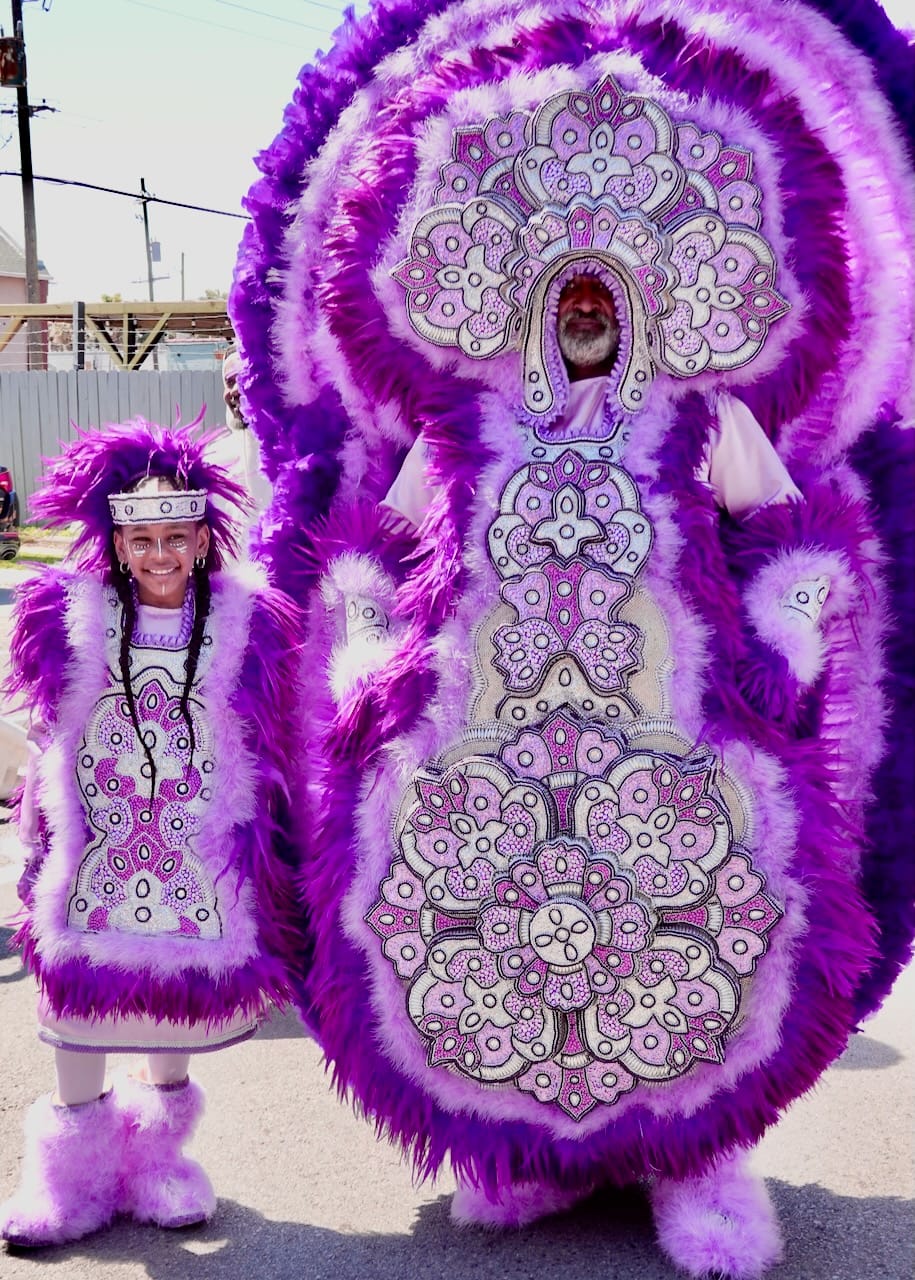
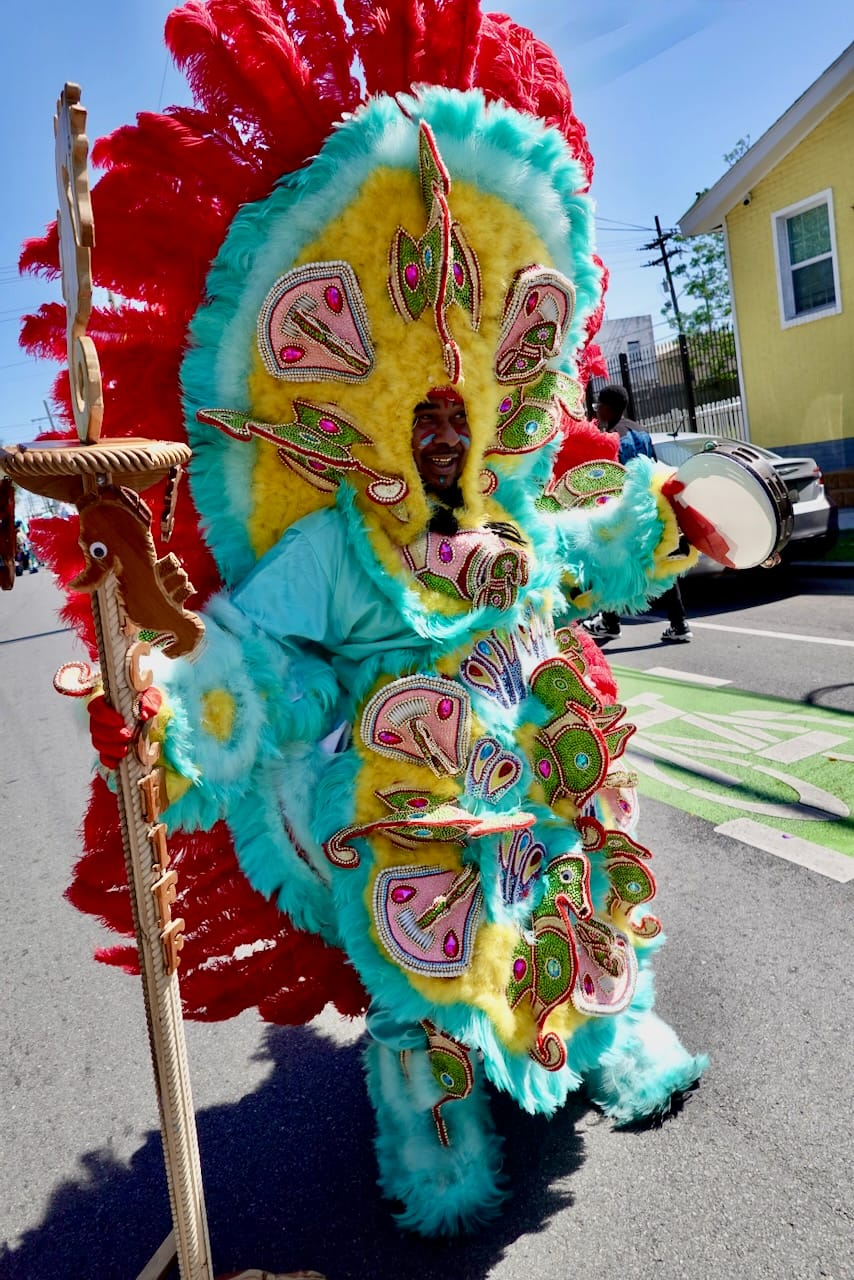
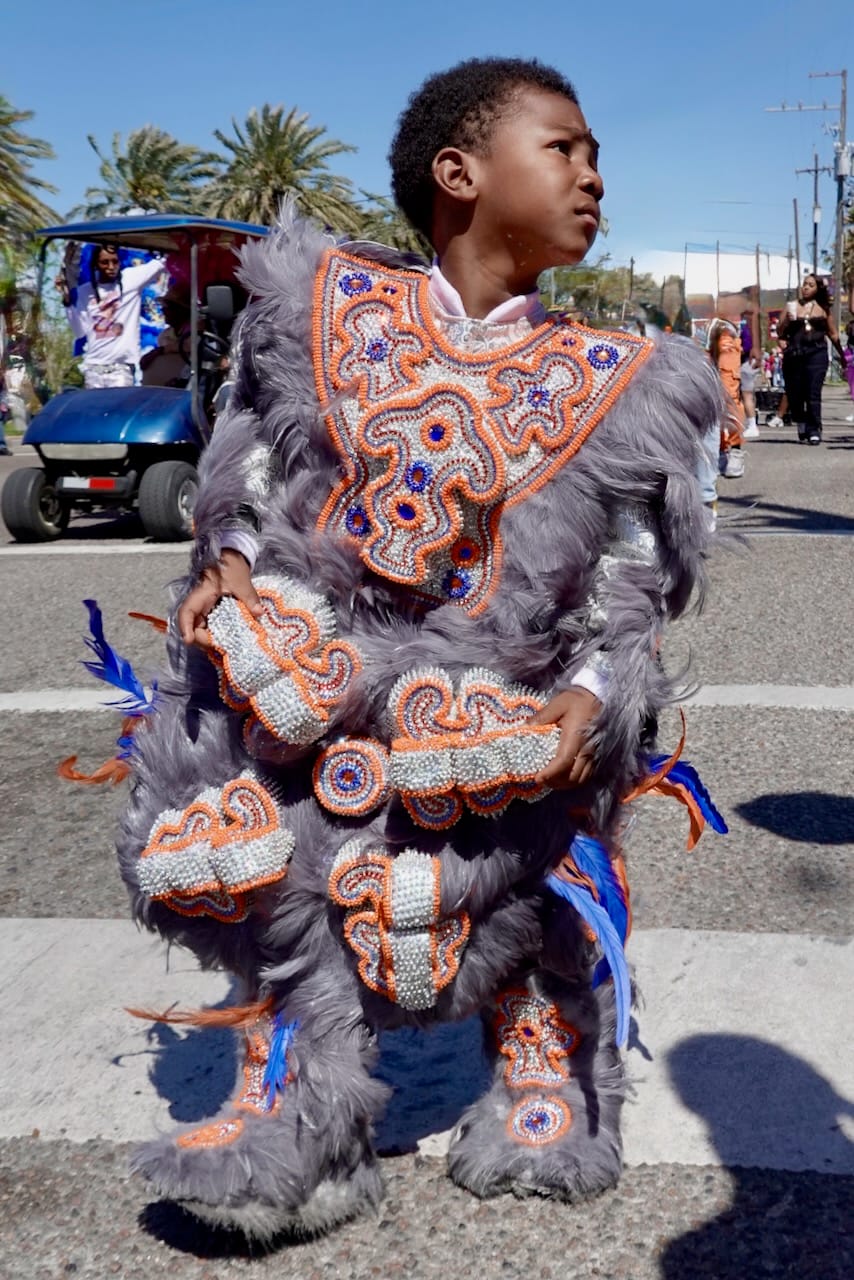
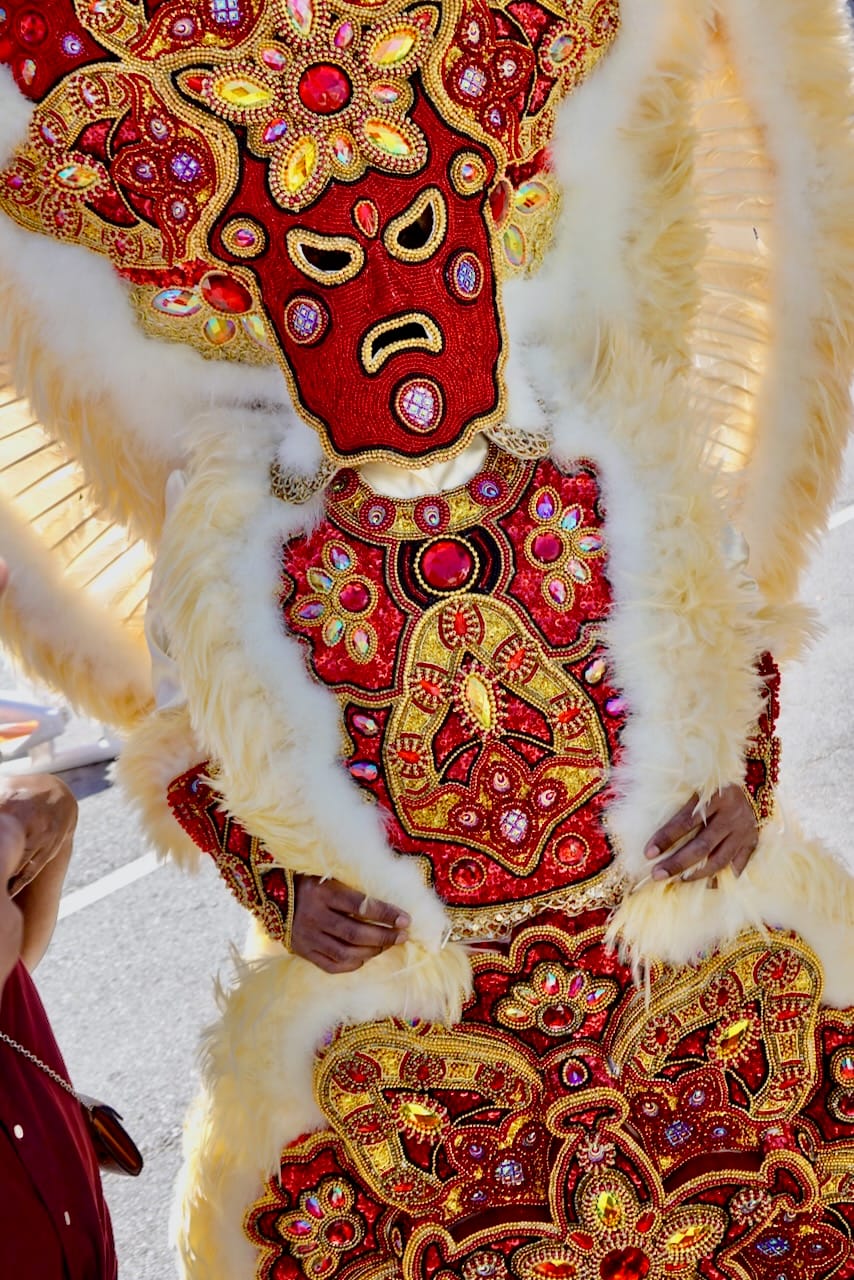

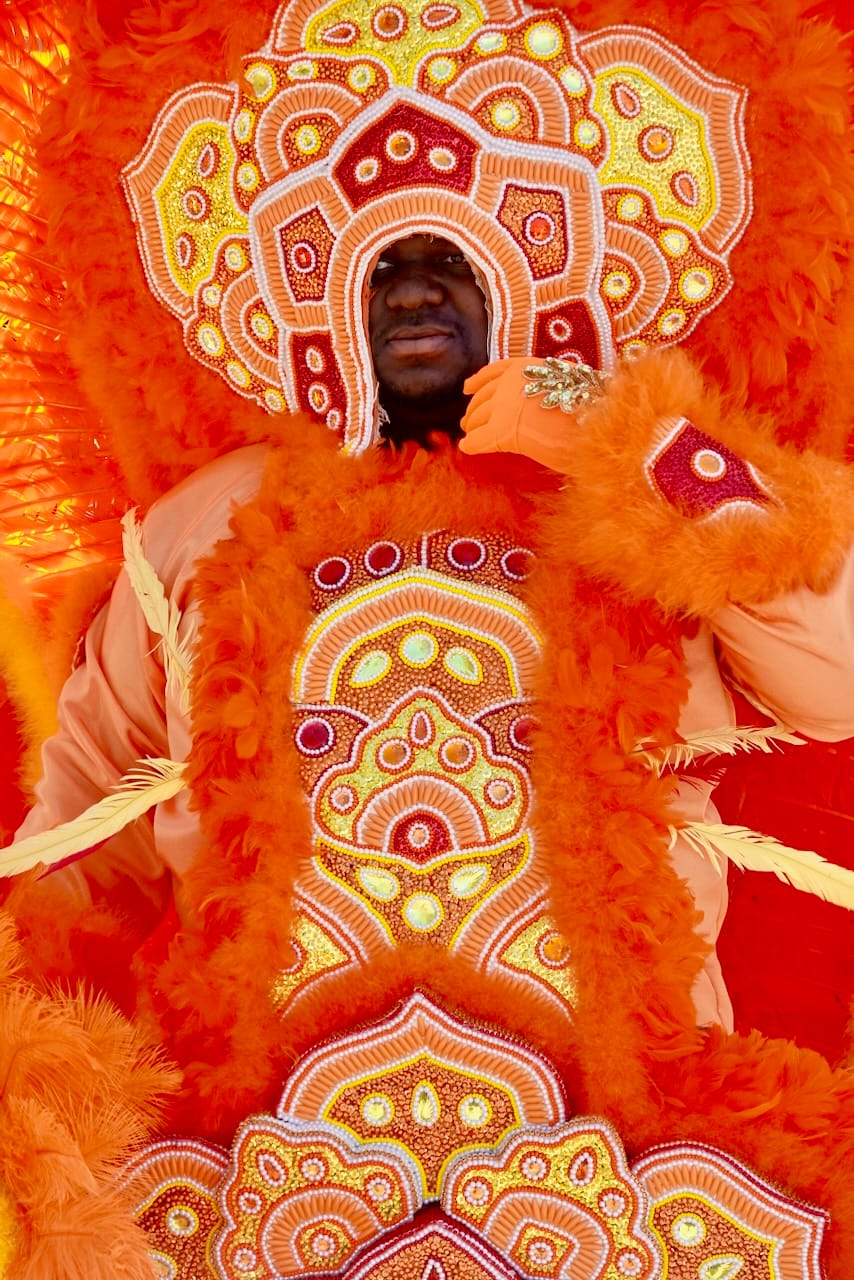
Downtown tribes with 3-D suits
Rising to the title of Big Chief of the Yellow Pocahontas tribe, Tootie became known for his battles of craftsmanship and tradition rather than violence. As a result, he was crowned the first and only Chief of Chiefs.
Unlike most other ongoing traditions here, the Indians weren’t given permits for their parades. In 2005, after years of run-ins with police and permit office, Chief of Chiefs Tootie Montana took the fight to the New Orleans City Council where they were holding a review of complaints of misconduct by police during Carnival. Police had blocked the street and fired into the crowd of the Saint Joseph's Night parade. Speaking for his people, Montana passionately recounted his 52-year history as an Indian.
While fighting for their parade's official inclusion in the culture of our city, Tootie Montana suffered a heart attack and died, right then and there, at 82 years old. Considered a martyr for the cause, his funeral was reportedly one of the largest second lines in the history of the city. In 2010, a statue was erected in his honor in Armstrong Park near historic Congo Square.
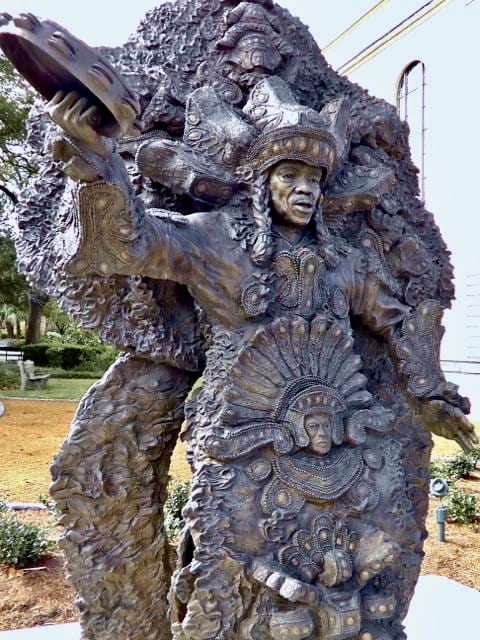
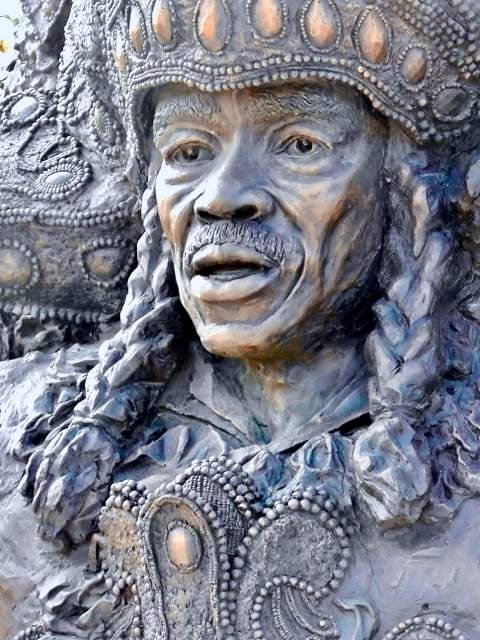
Chief of Chiefs “Tootie” Montana
Then what happened?
In 2012, a truce was finally reached with the police. The mayor attended Super Sunday's parade that year, greeting the police now guarding the parade on its route. HBO's Treme featured a Big Chief character in their series and exposed millions to the traditions and culture of masking.
The upside of all of the attention is that the Indians' parades are official and protected. The downside is that they are now crowded with photographers and videographers, some of whom lack a respect for the clear path needed to accommodate the feather-festooned suits.
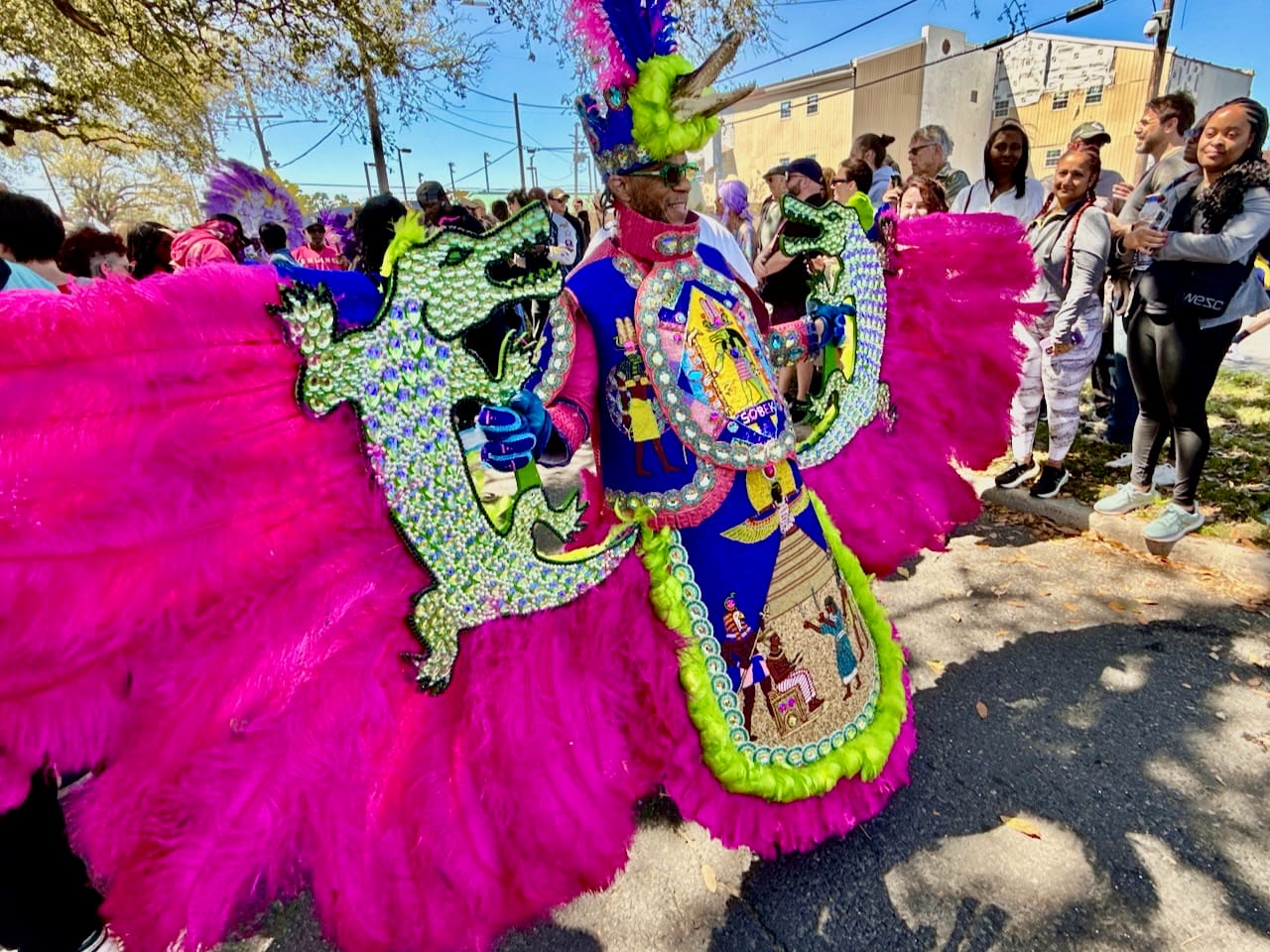
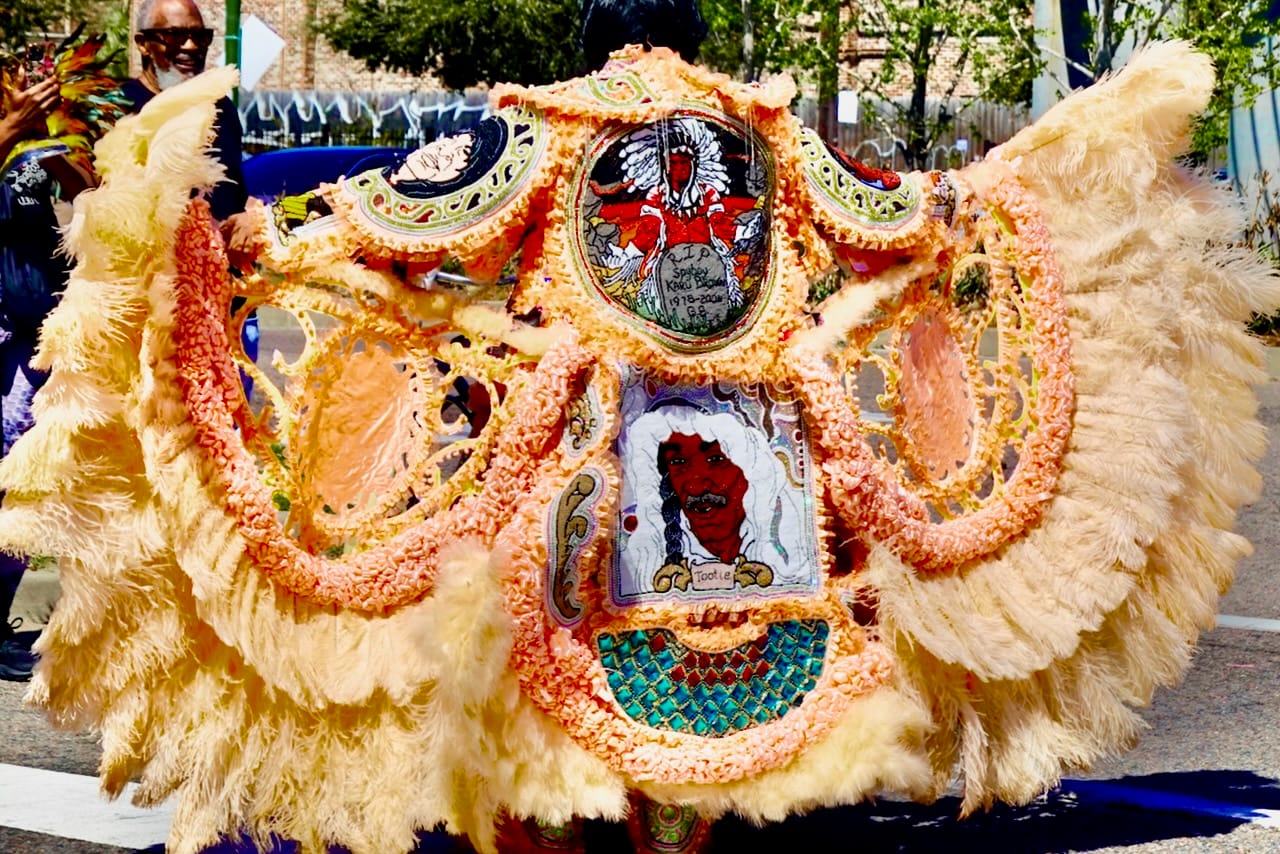
My favorite thing
New Orleans hosts literally hundreds of festivals and parades annually, but Super Sunday is my favorite. I love walking around beforehand checking out the grilled meats, homemade pralines, and adult beverages like the hollowed pineapple filled with a boozy concoction and LOTS of festive garnishes. I love the thrill of the brass bands, Baby Dolls (that's another whole story), and clubs dancing past to start things off.
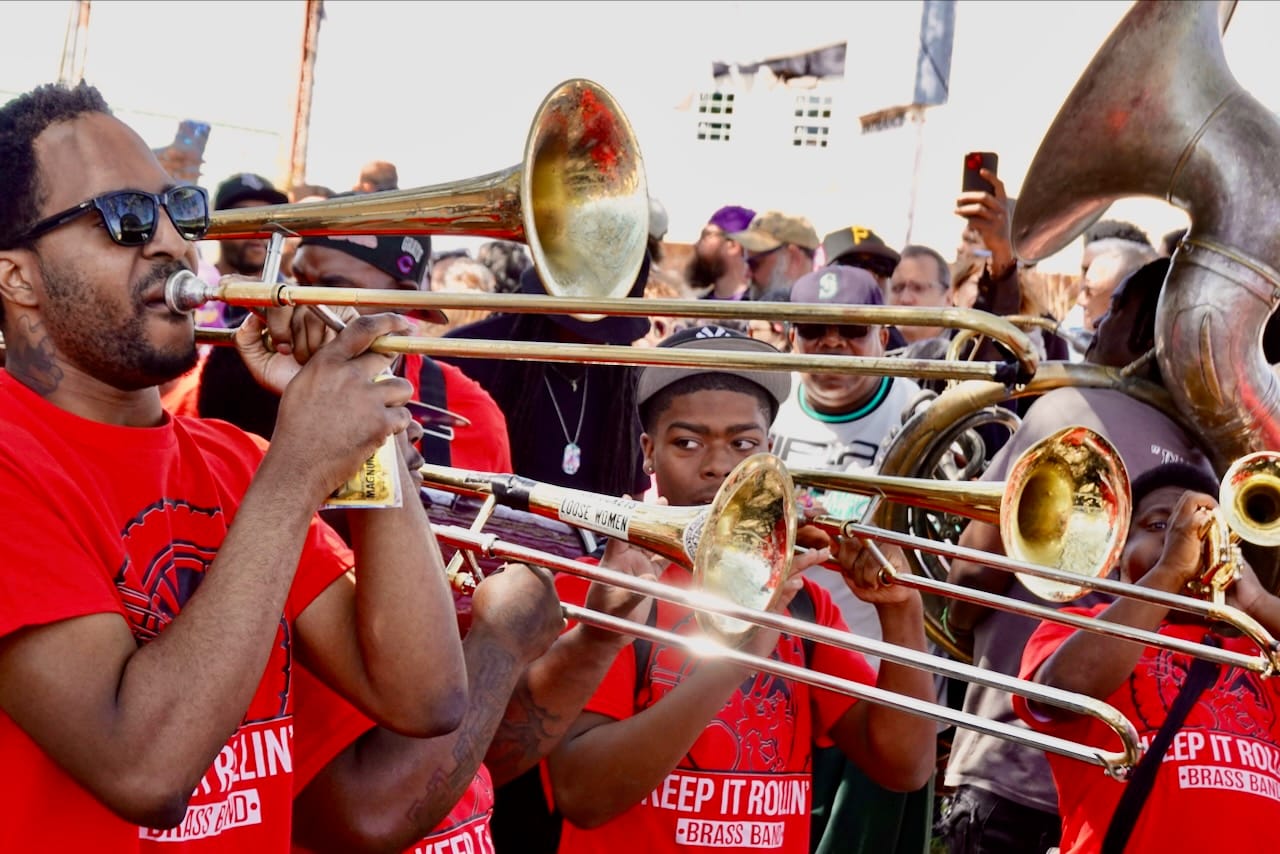
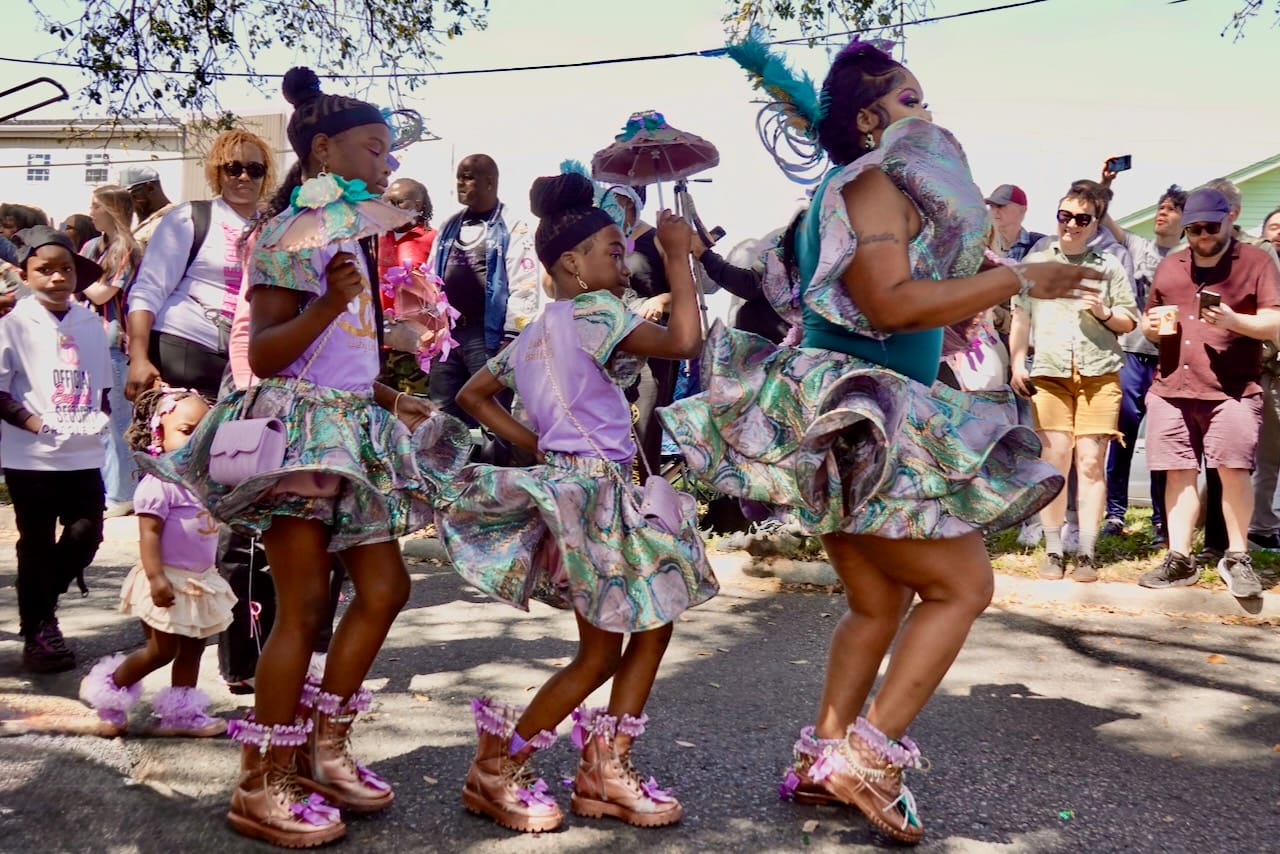


I love the songs (often about sewing) chanted to percussive instruments. I love entire families parading together and tiny beaded-and-feathered toddlers pulled in wagons.
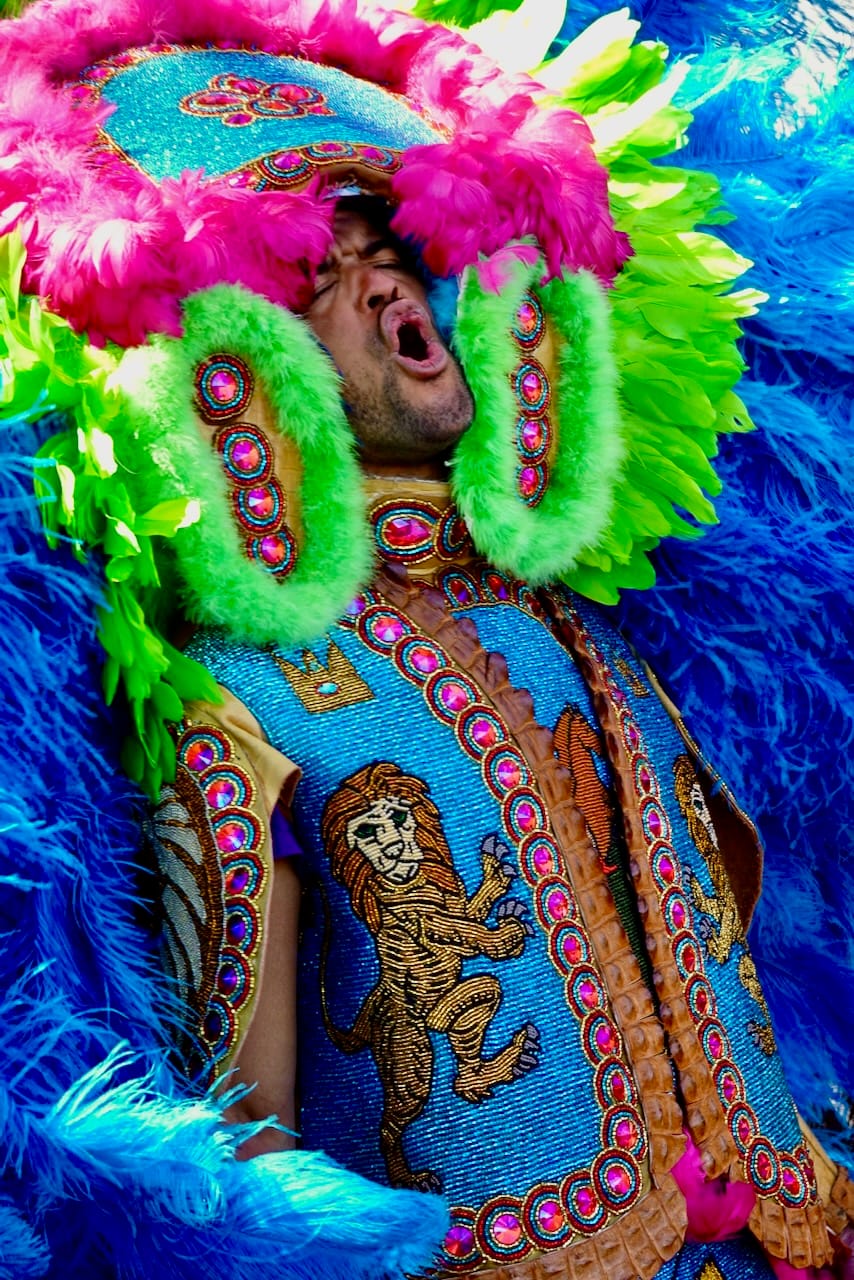
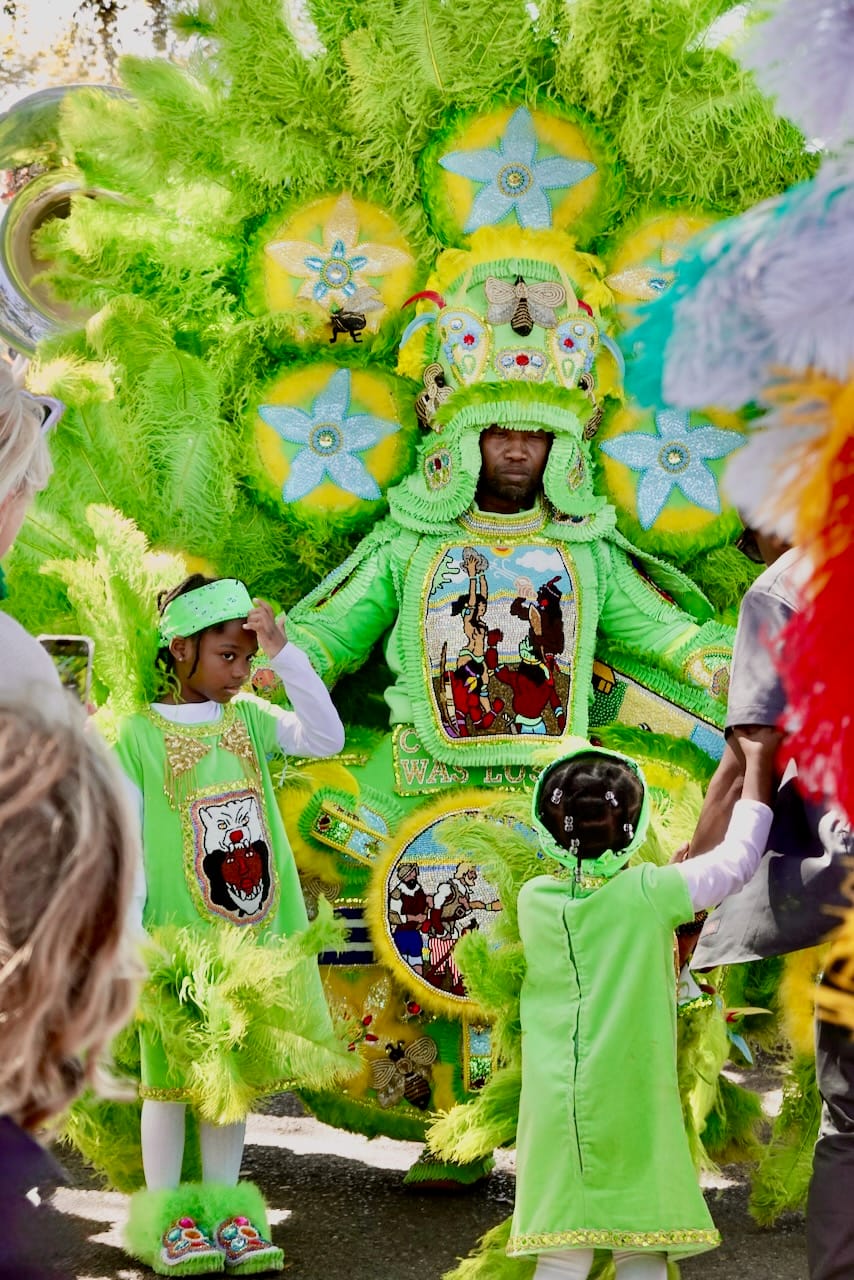
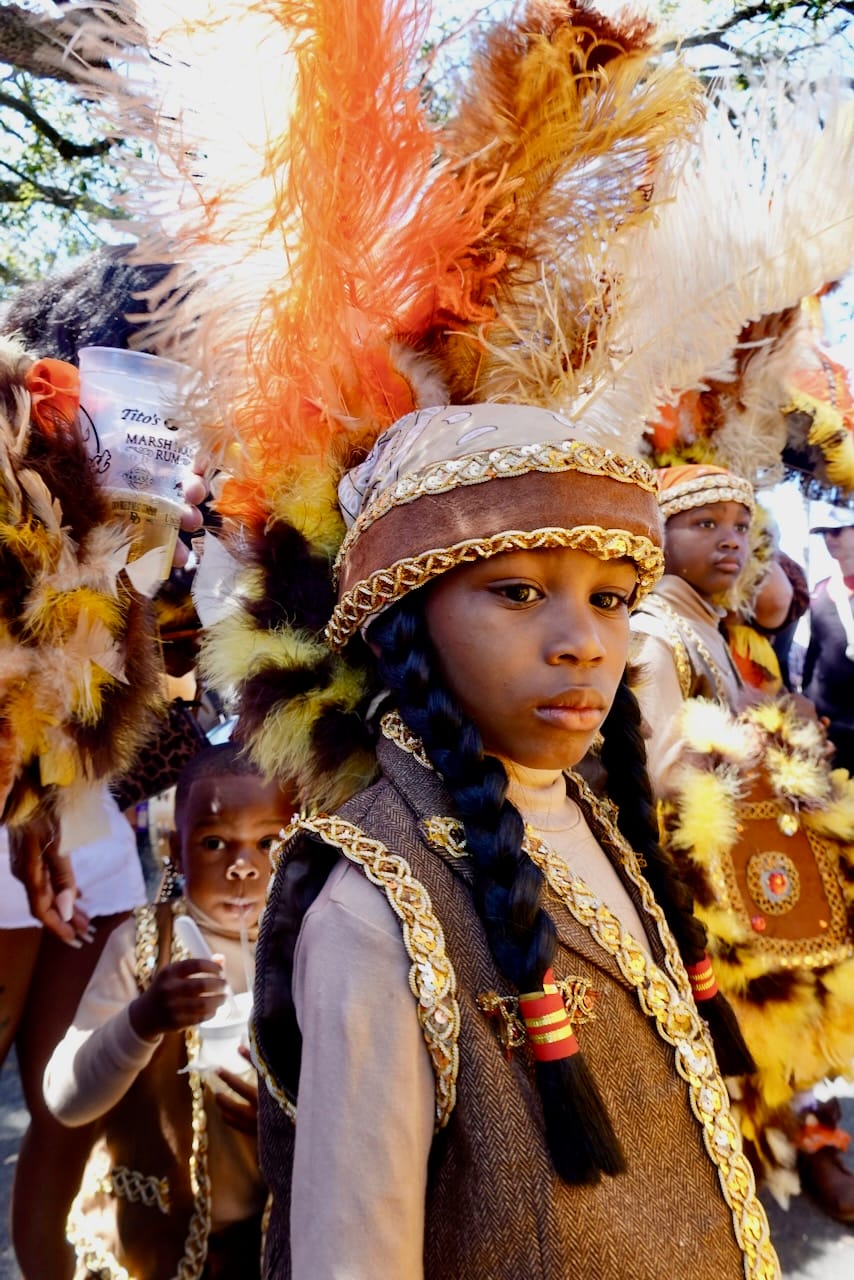

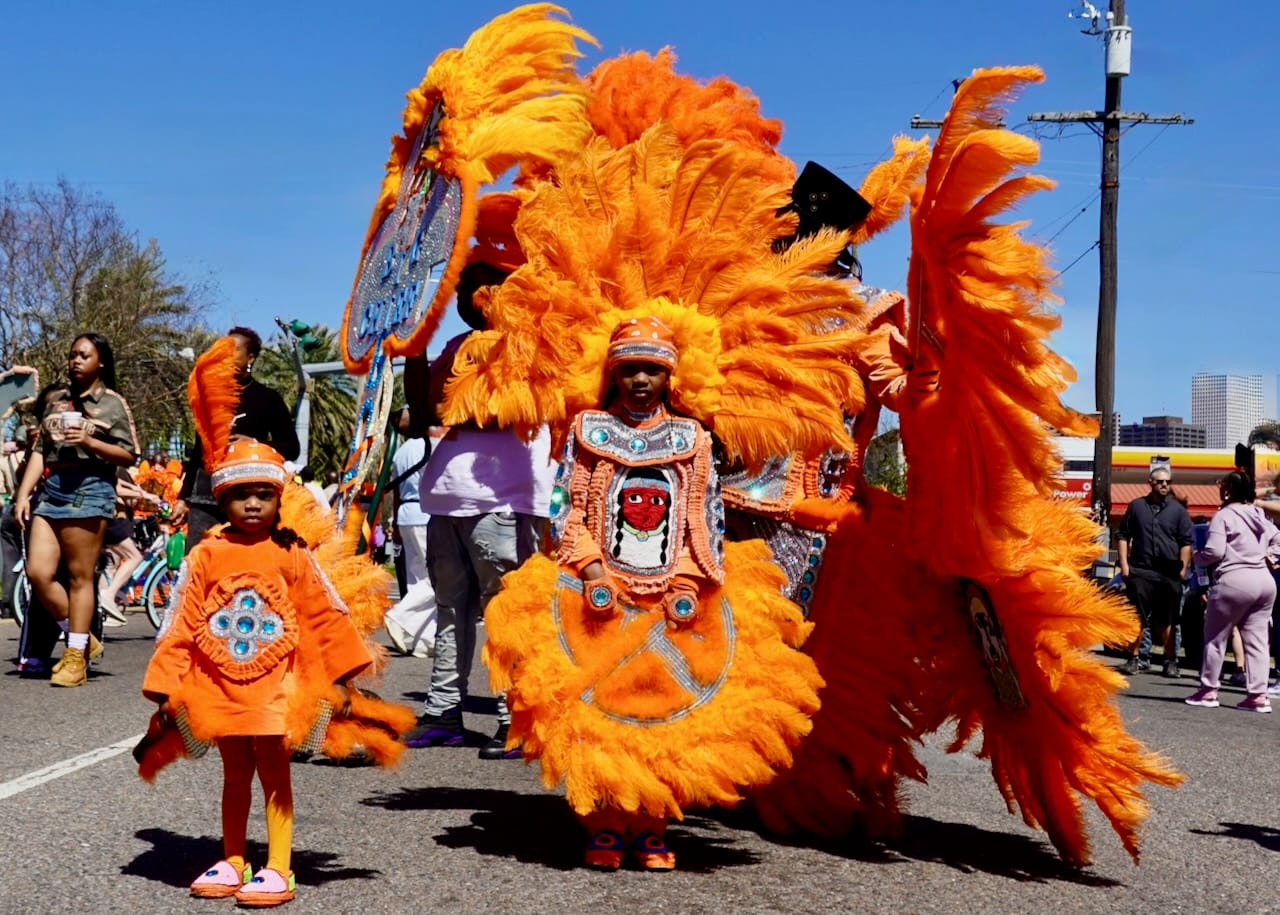
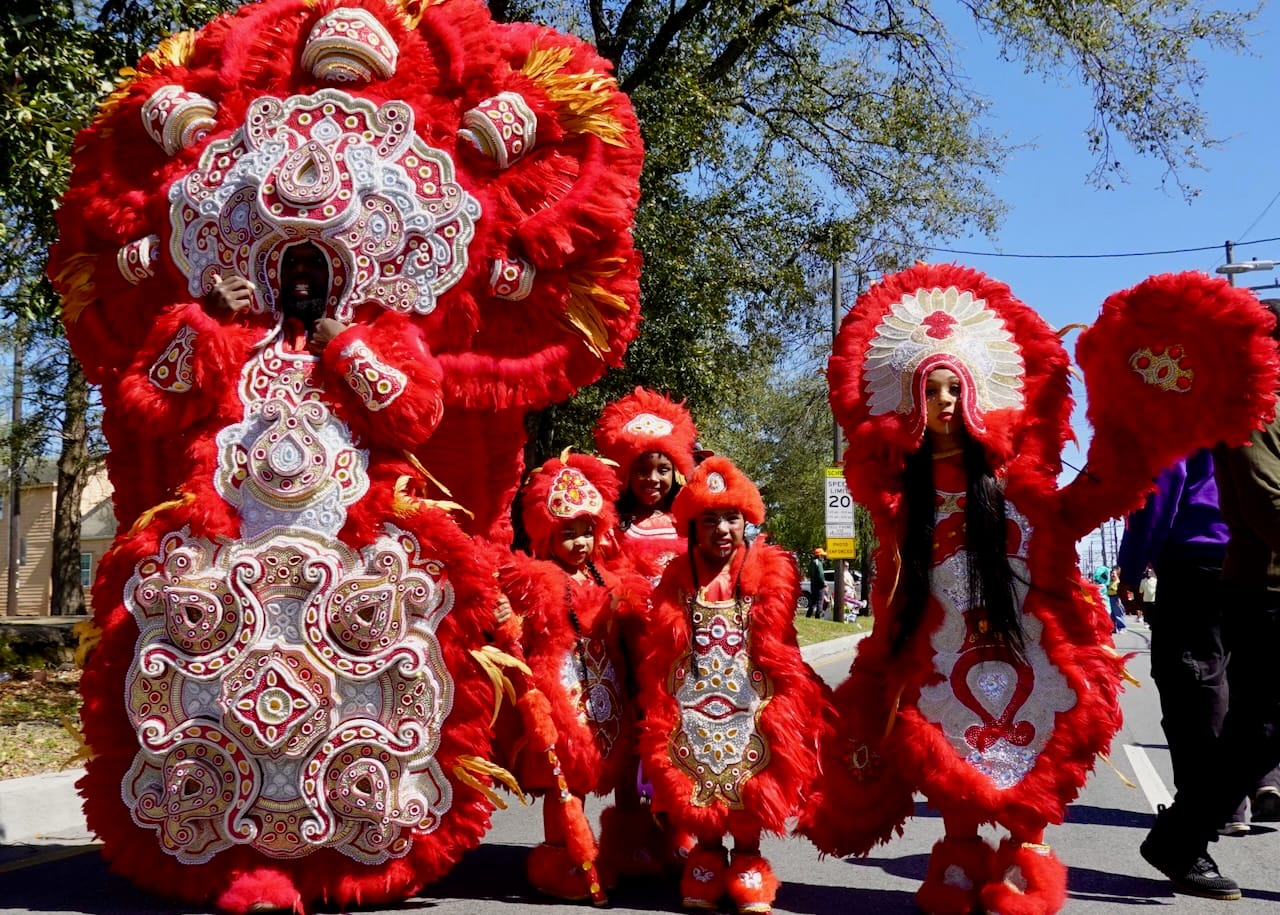
I love the craftsmanship, the sequins, the Swarovski, fluffy marabou feathers, giant colorful ostrich feathers, velvet ruffled trim, and so much more.

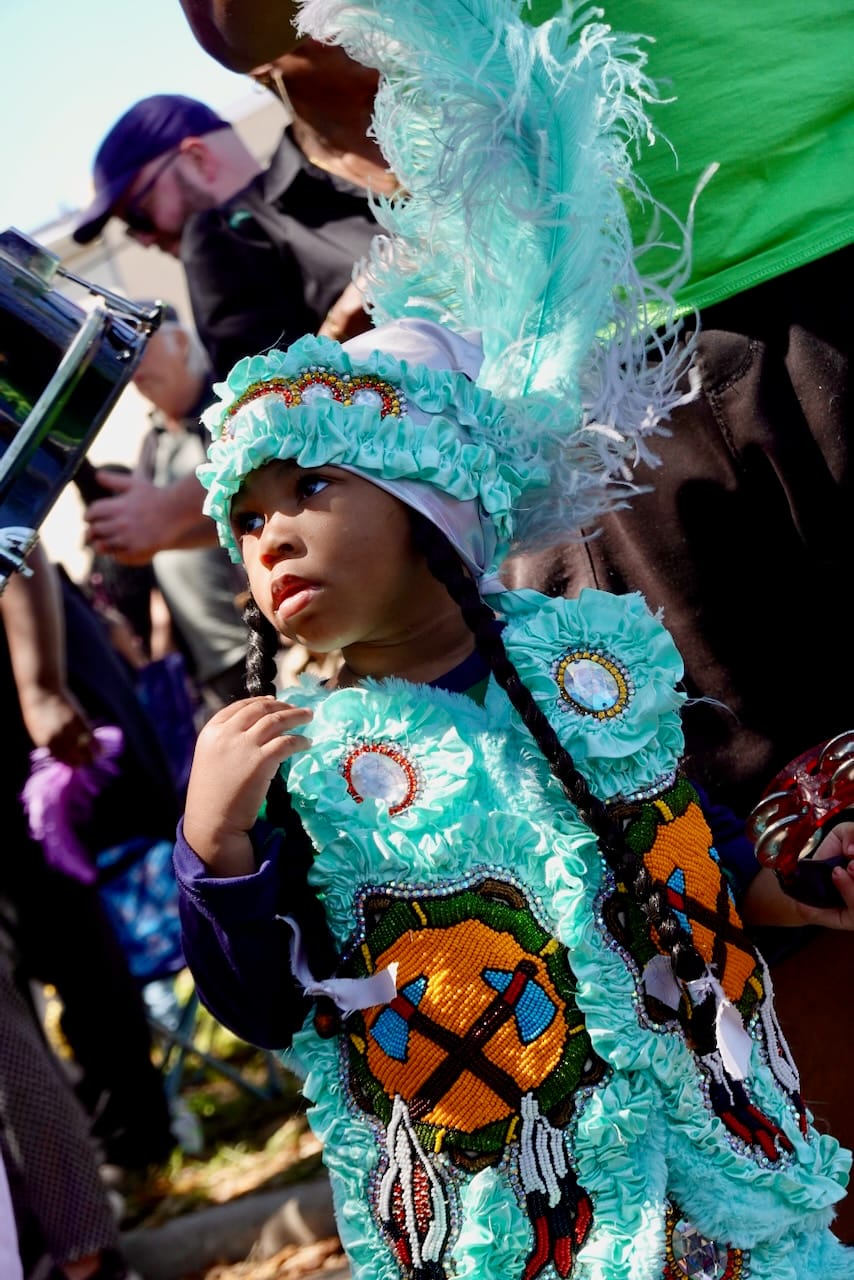
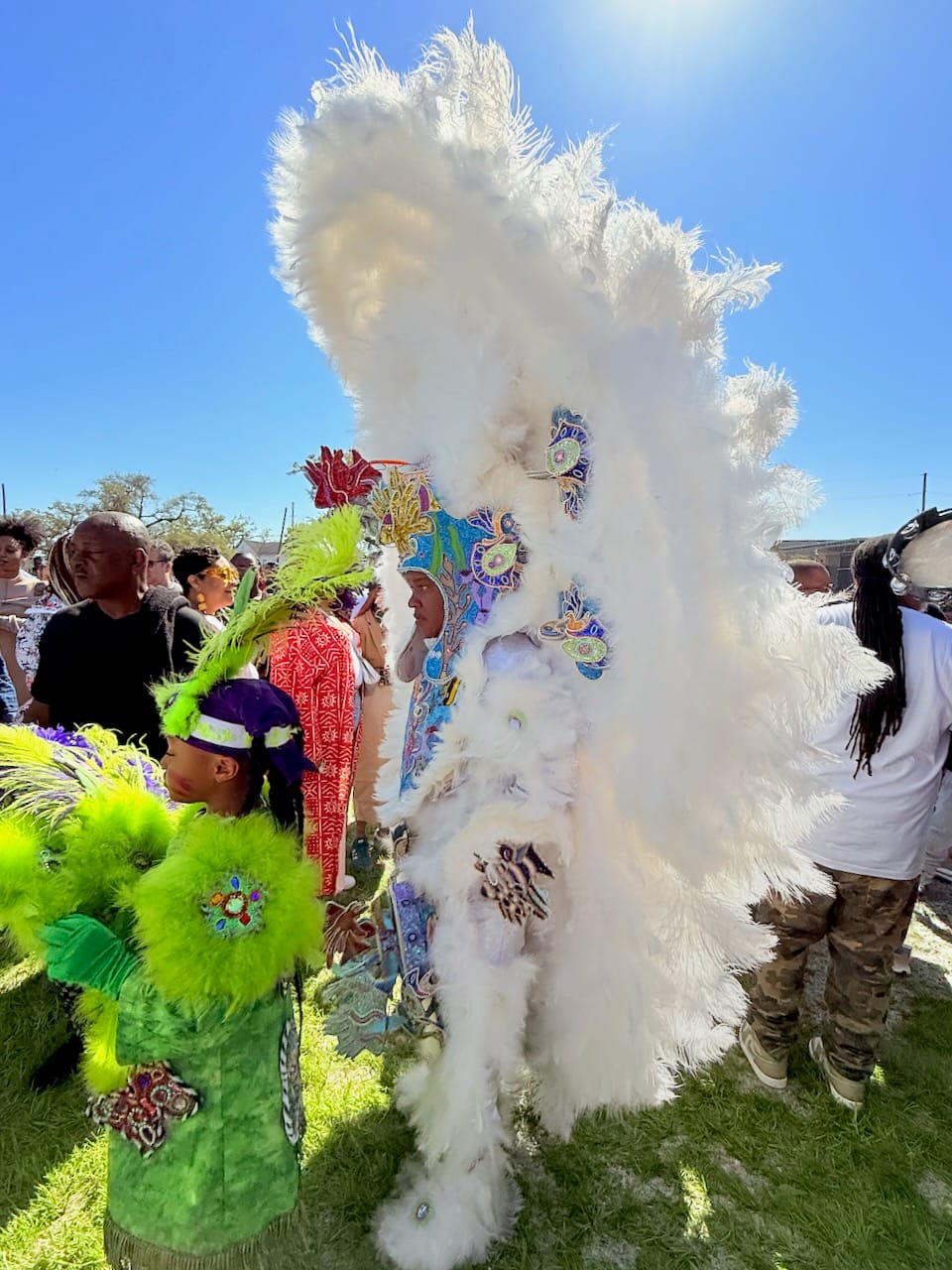
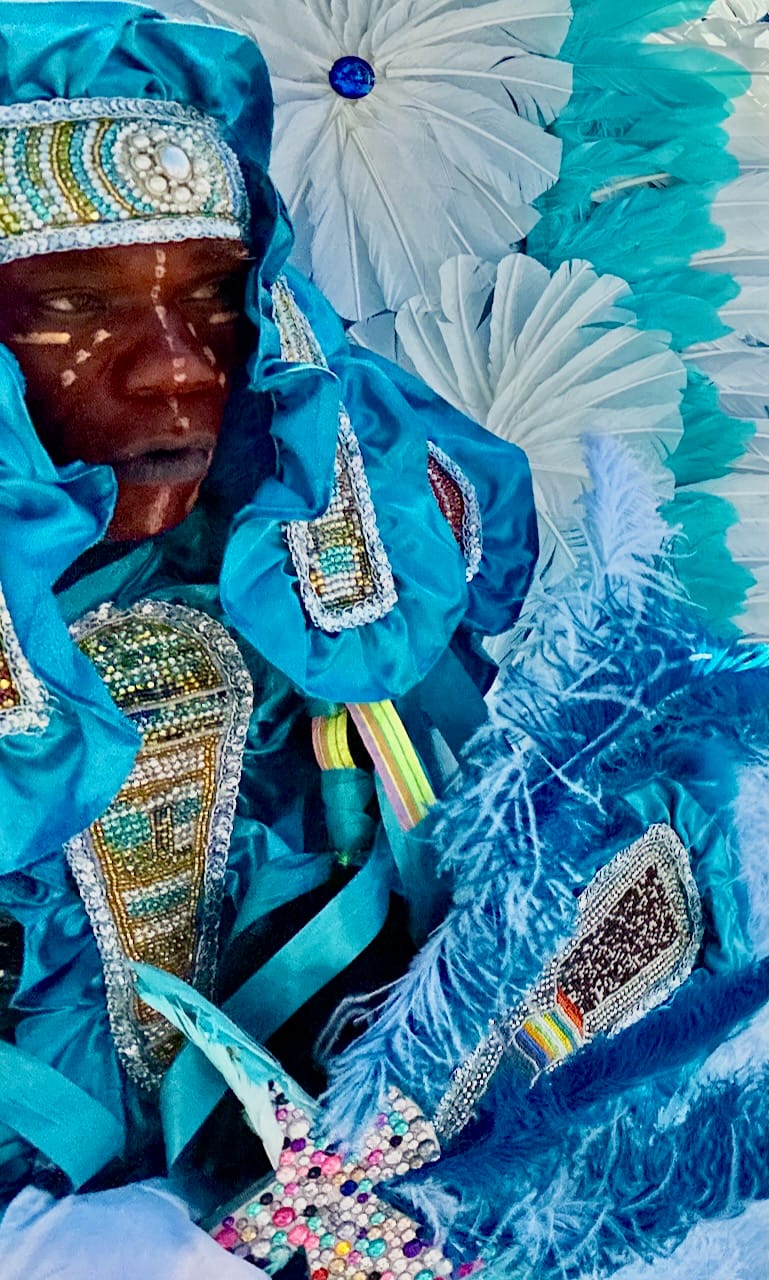
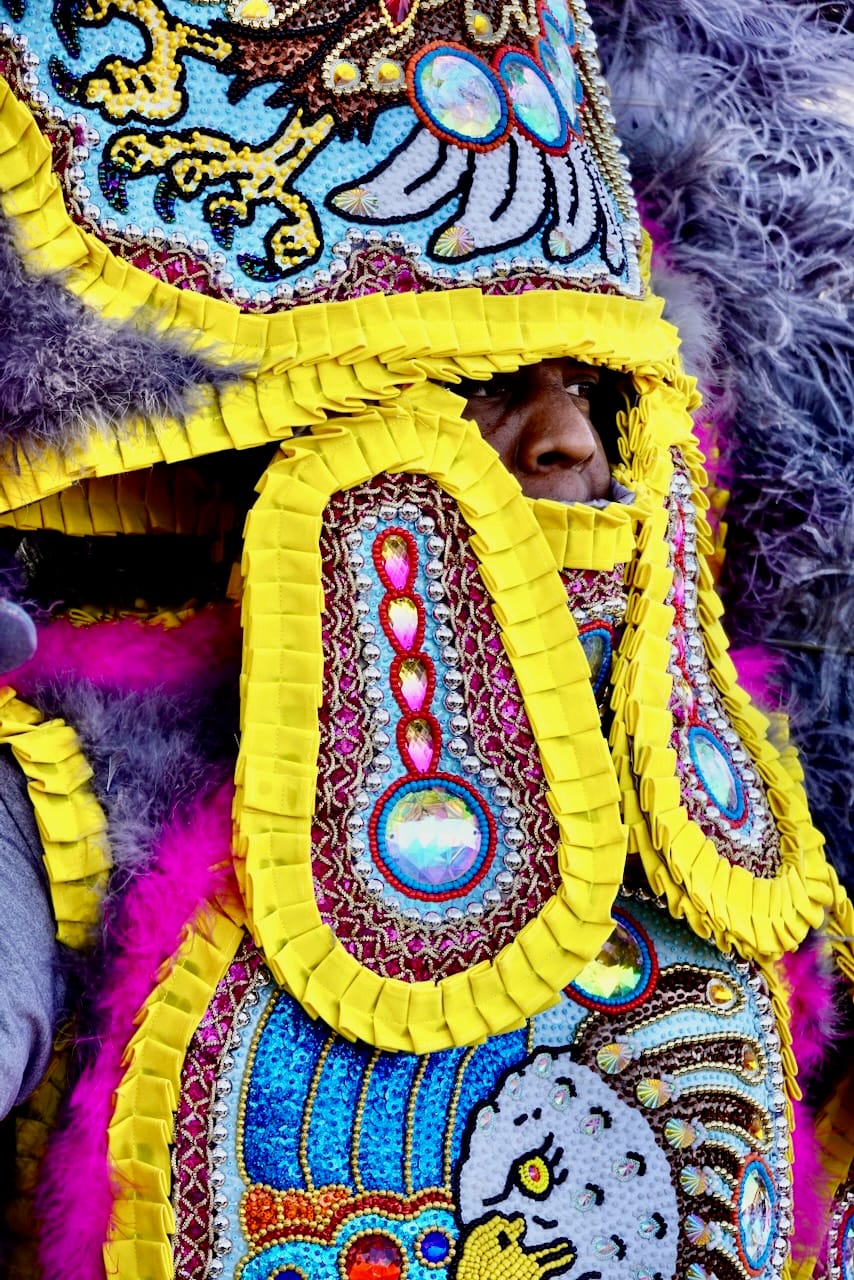
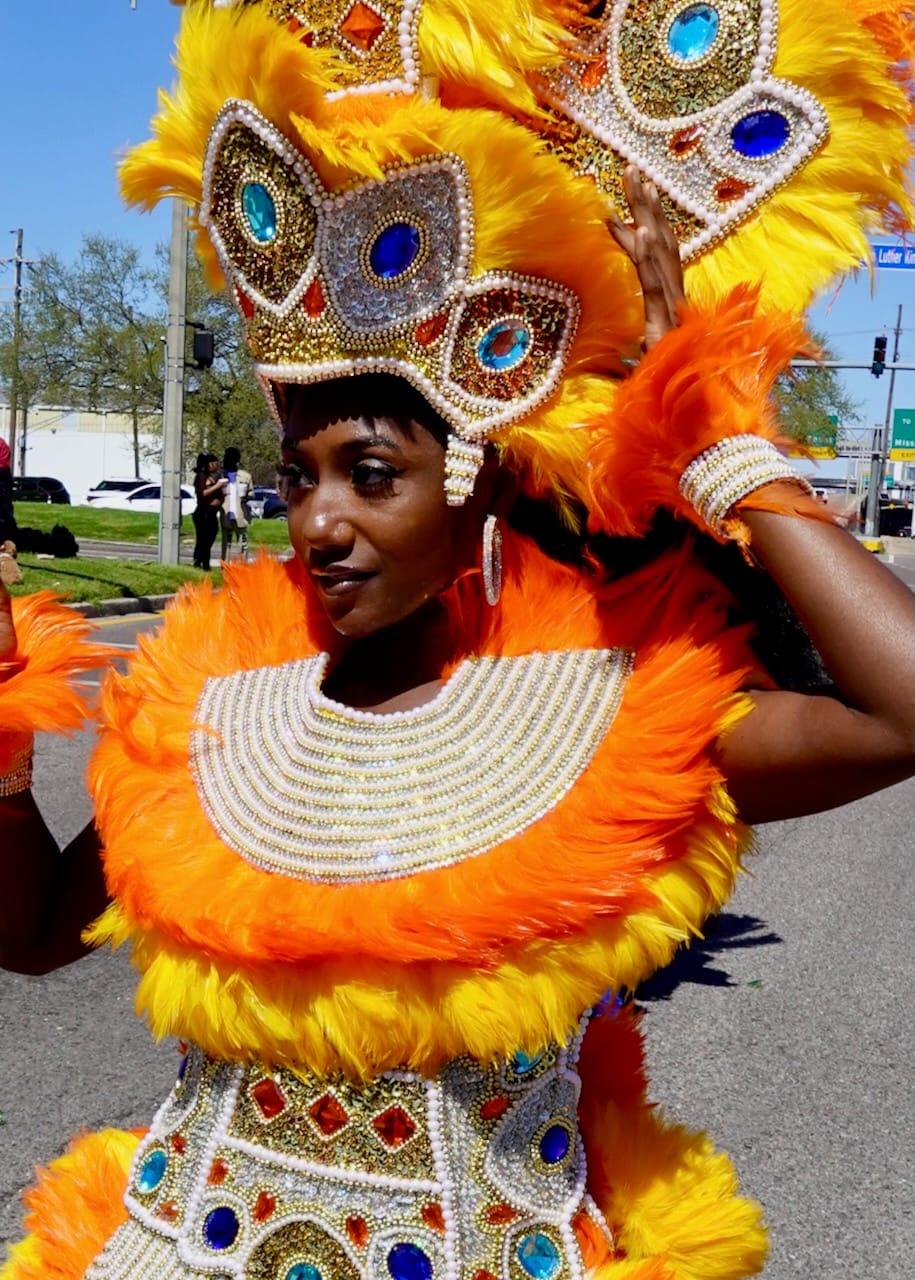
As temperatures heat up, the beads and feathers stop parading our streets. I'm so grateful to everyone designing, constructing, and sewing for next year's amazing works of art!
Special shout out to Golden Eagles Queen Tahj (Williams) – the first artist commissioned by the NFL to design the Super Bowl logo – for continuing to innovate with every year's creations (Sorry I didn't get a shot of her matching beaded beret).


Queen Tahj
Get a subscription to the Writing Unblocked Newsletter and get the Writing Unblocked ebook as my gift to you!
Actors and filmmakers, make sure you check out my Know Small Parts newsletter!
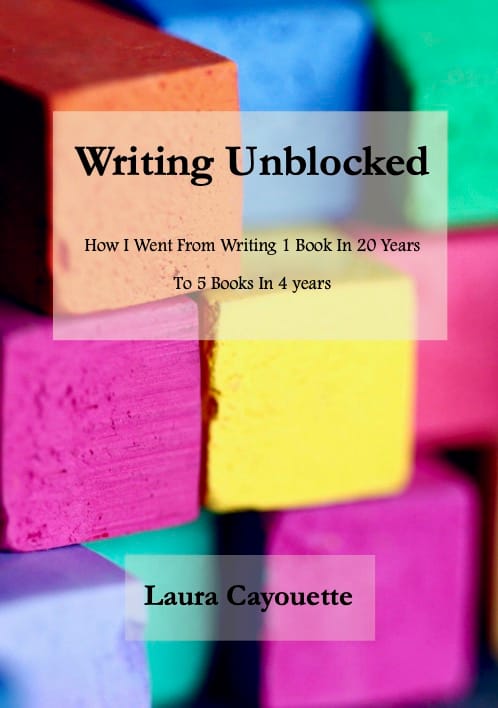
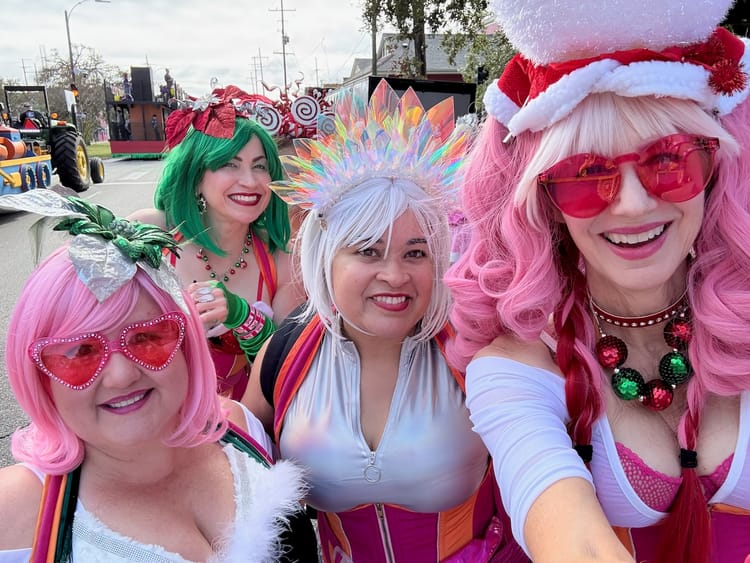
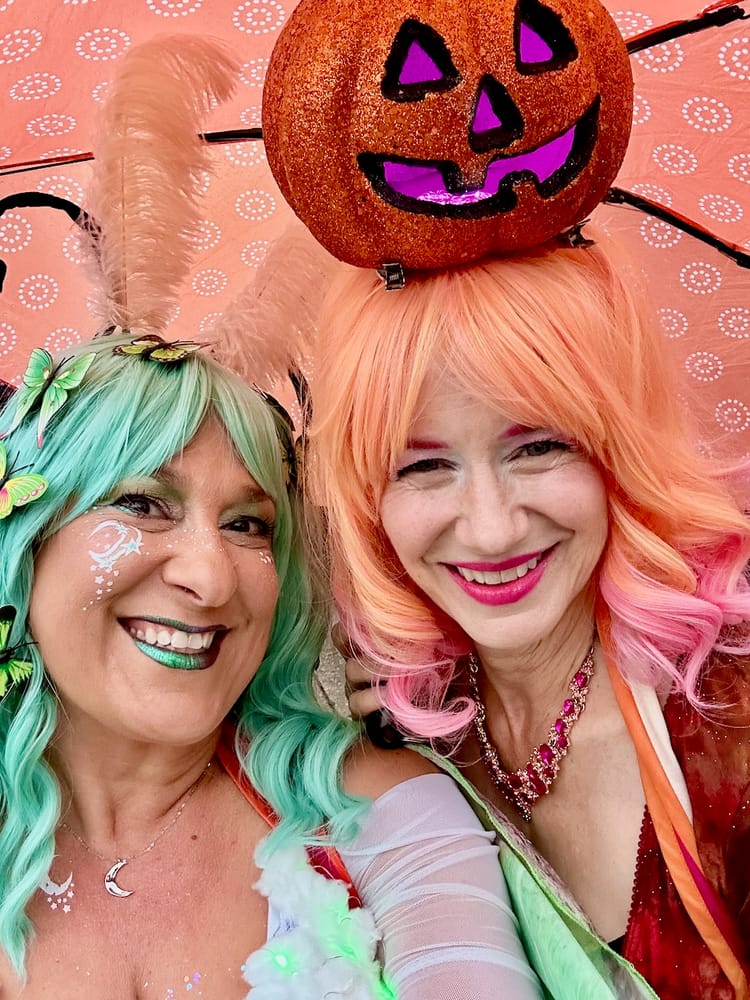
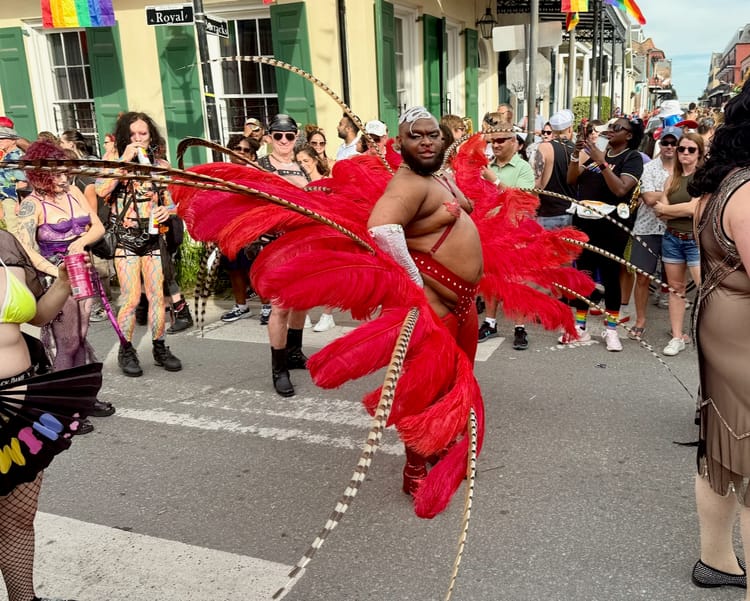
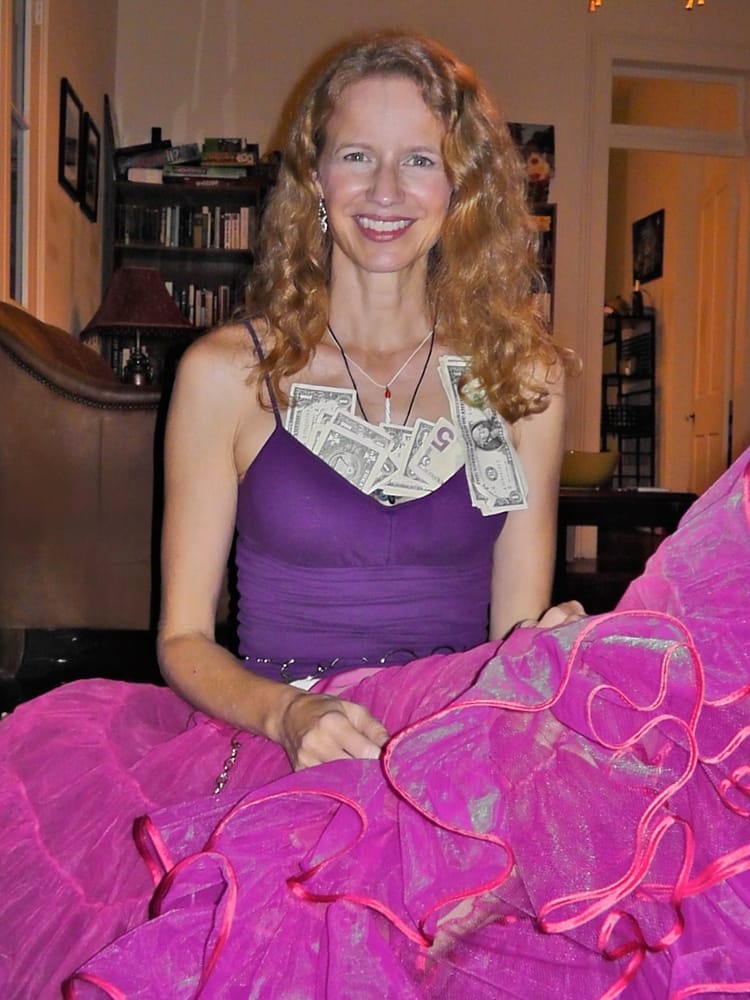
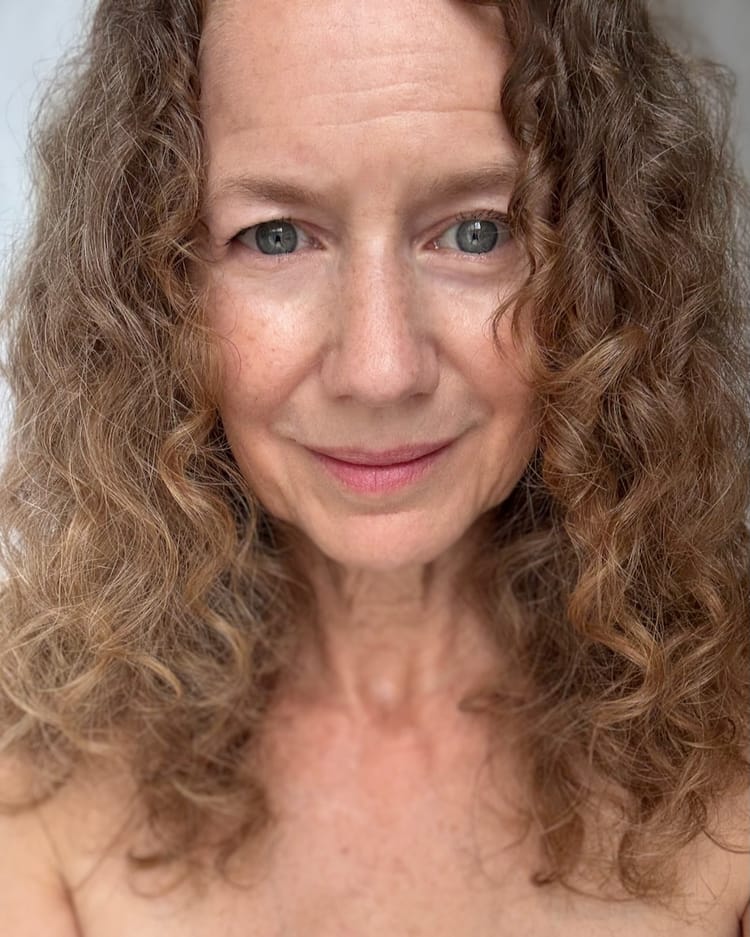
Member discussion